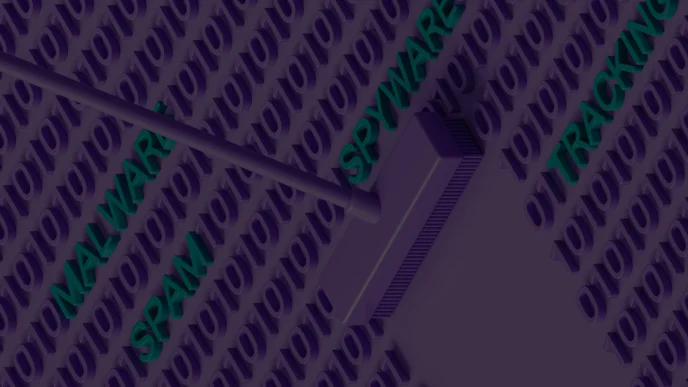Cybersecurity has expanded in scope and talent over the last decade. The field now attracts professionals from diverse ethnic, cultural, and educational backgrounds. However, a striking disparity remains. Although cybersecurity is becoming more diverse in many respects, the gender gap persists. This article delves into the latest developments, examines the causes of this imbalance, and explores initiatives that aim to address the challenge.
Evolving Landscape of Cybersecurity
Cybersecurity is a dynamic industry. Advancements in technology and the rising sophistication of cyberattacks demand innovative responses. Recent studies indicate that global cybersecurity spending has grown significantly. Organizations have expanded their cybersecurity teams, bringing in expertise from nontraditional tech backgrounds.
Industry experts now emphasize the need for diverse perspectives. Teams that combine technical expertise with creative problem-solving have proven more adept at handling evolving threats. Companies are actively recruiting talent from various sectors, including finance, law enforcement, and even psychology, to foster a more comprehensive defense strategy.
Despite these advances, one aspect remains largely unchanged. Cybersecurity Is Becoming More Diverse … Except by Gender. A deeper look reveals that women continue to be underrepresented in cybersecurity roles, even as the field experiences a diversification in other areas.
The Gender Gap in the Cybersecurity Workforce
Numerous reports and surveys consistently highlight the gender imbalance in cybersecurity. According to recent workforce studies, women represent only about 20% of the global cybersecurity workforce. This figure is even lower in senior and leadership positions. Several factors contribute to this disparity.
One key factor is the longstanding stereotype of cybersecurity as a male-dominated field. Many young women are not encouraged to pursue STEM careers due to societal norms and a lack of visible role models. In addition, the technical demands of the industry are often misinterpreted as inherently unsuitable for women. These perceptions persist despite evidence showing that diverse teams deliver better outcomes.
Another critical point is the “pipeline problem.” Educational institutions and training programs have historically seen lower enrollment rates of women in cybersecurity-related courses. Scholarship opportunities, mentorship programs, and hands-on training initiatives have not yet reached the scale needed to bridge the gender gap significantly.
Barriers to Gender Diversity in Cybersecurity
Understanding the barriers to gender diversity is crucial for implementing effective solutions. The challenges can be categorized into cultural, educational, and organizational hurdles.
Cultural Barriers
Cultural perceptions shape career aspirations. Many women face discouragement early on. This starts with societal expectations and extends into professional environments. When industry events, conferences, and publications are dominated by male voices, the message is clear: leadership and technical prowess are seen as masculine traits. This imbalance not only deters potential talent but also creates a feedback loop that reinforces stereotypes.
Educational Barriers
Educational systems play a vital role in shaping career choices. Historically, curricula in STEM fields have not been designed with gender inclusivity in mind. The scarcity of female instructors and mentors in cybersecurity exacerbates the problem. Studies show that early exposure to coding and cybersecurity concepts increases interest among girls. Unfortunately, many schools still lag in providing equal opportunities for girls to engage in these subjects.
Programs that target young women and high school students have started to emerge. These initiatives aim to spark interest by providing hands-on experiences, role models, and real-world problem-solving scenarios. Yet, widespread adoption remains a challenge, and many programs lack the resources to scale up.
Organizational Barriers
Within organizations, unconscious biases and a lack of supportive policies further hinder gender diversity. Workplace cultures that reward long hours and “toughness” can be unwelcoming to women who may also juggle family or caregiving responsibilities. In many companies, there is a noticeable absence of flexible working arrangements, mentorship programs, and diversity training.
Recruitment practices can also be biased. Job descriptions that emphasize “aggressive” or “competitive” traits can deter qualified female candidates. Moreover, performance evaluation systems that rely heavily on quantitative metrics may fail to recognize collaborative and innovative contributions more commonly associated with diverse work styles.
Cybersecurity Is Becoming More Diverse … Except by Gender: The Impact of the Imbalance
The persistent gender gap has broad implications for the industry. Diverse teams drive innovation by offering varied perspectives. When half of the potential talent pool is underrepresented, companies risk missing out on creative solutions. The gender imbalance also affects team dynamics and organizational culture.
Research indicates that teams with a balanced gender ratio tend to perform better in risk assessment and decision-making. Gender-diverse teams are more likely to consider alternative threat models and innovative cybersecurity strategies. The underrepresentation of women can thus translate into missed opportunities for robust security strategies.
For the industry to thrive, it must embrace the full spectrum of talent. Addressing the gender gap is not merely a question of fairness; it is also a strategic imperative for enhancing the resilience and adaptability of cybersecurity measures.
Initiatives and Solutions to Bridge the Gap
Despite the challenges, several initiatives aim to create a more inclusive environment in cybersecurity. These efforts come from educational institutions, industry groups, and private companies. They focus on various aspects, from early education and mentoring to corporate policy reform.
Educational and Mentorship Programs
Many organizations now offer scholarships and mentorship programs specifically for women. These programs are designed to build confidence, provide technical training, and foster professional networks. For instance, coding boot camps and cybersecurity competitions have started to include female-only tracks. These initiatives help participants gain practical experience and prepare for industry certifications.
Some universities have established specialized cybersecurity programs that actively recruit women. They partner with tech companies to offer internships and real-world project opportunities. These programs not only enhance technical skills but also help break down stereotypes by showcasing successful female cybersecurity professionals.
Corporate Policy Reforms
Leading tech companies are beginning to reassess their recruitment and retention strategies. They are implementing policies that promote work-life balance, flexible hours, and remote work options. Such changes can make the cybersecurity field more attractive to women who seek to balance professional and personal responsibilities.
Diversity and inclusion training has become a cornerstone of corporate culture in many organizations. Companies are actively working to identify and eliminate unconscious biases in recruitment and promotion processes. Additionally, establishing clear career pathways and leadership development programs for women can help close the gender gap.
Industry Best Practices
Organizations that have successfully improved gender diversity share several best practices. They focus on creating an inclusive work culture and providing growth opportunities for all employees. Here are a few strategies that have proven effective:
- Inclusive Job Descriptions: Crafting job postings that emphasize skills, teamwork, and collaboration rather than aggressive competitiveness.
- Diverse Interview Panels: Using mixed-gender interview panels to ensure a balanced evaluation of candidates.
- Continuous Professional Development: Offering regular training and upskilling opportunities tailored for diverse learning styles.
- Mentorship and Sponsorship: Encouraging senior leaders to mentor emerging talent and advocate for women in cybersecurity.
These strategies have shown promise in reducing the gender disparity in cybersecurity. Companies that adopt such practices not only improve diversity but also benefit from enhanced innovation and team performance.
Future Outlook and Recommendations
The future of cybersecurity is promising if the industry can harness the full potential of its workforce. Addressing the gender gap is essential for creating resilient security frameworks. Here are some recommendations for stakeholders:
- Expand Outreach Programs: Educational institutions and industry bodies must collaborate to launch outreach programs aimed at young girls. Early exposure to cybersecurity concepts can foster interest and pave the way for future careers.
- Invest in Continuous Learning: Employers should invest in continuous education and professional development for all employees. By offering diverse learning opportunities, companies can nurture talent from all backgrounds.
- Promote Policy Reform: Policymakers should incentivize initiatives that promote gender diversity. This can include grants for educational programs, tax benefits for companies with inclusive policies, and support for research into gender dynamics in STEM.
- Measure and Monitor Progress: Organizations must set measurable diversity goals. Regular audits and transparent reporting can help track progress and ensure accountability.
Achieving gender parity in cybersecurity requires sustained efforts across multiple fronts. Stakeholders must work together to create an environment that values diversity in all its forms. The industry’s growth depends on it.














